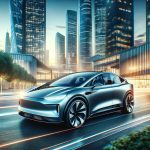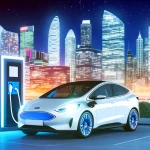Tesla, the industry leader in electric vehicles, has recently launched a unique social media campaign to showcase the capabilities of its Full Self-Driving (FSD) V12 software. Using real-life footage, Tesla has pinned a post on their official X profile to demonstrate FSD V12’s ability to handle complex driving scenarios. The campaign stands out by depicting the technology’s proficiency through user-shared content as well as Tesla’s curated videos, emphasizing the system’s real-world performance rather than listing features.
Strategic Social Media Engagement
Tesla’s strategy involves engaging with its community by sharing video clips of FSD V12 navigating through challenging driving circumstances like parking lots with obstacles, executing U-turns, and managing intricate left turns. One video even shows the system courteously allowing another car to merge onto the road. Tesla’s approach is not just a showcase but also an invitation for users to contribute their own experiences, bolstering the evidence of FSD V12’s operational success.
Community Response and Interaction
The call to action from Tesla prompted a wave of user-generated content, with many Tesla owners sharing their experiences with FSD V12. These submissions echoed the impressive maneuvers featured in Tesla’s official posts, further affirming the system’s capabilities and fostering a sense of community among enthusiasts and users of Tesla’s advanced driver-assist system.
Advancement and Opportunities Beyond Tesla
Despite the enhancements in FSD V12, Tesla continues to emphasize the need for driver vigilance, as the system requires supervision and is not fully autonomous. The improved system performance has sparked discussion about its potential application beyond Tesla’s own vehicles, with CEO Elon Musk expressing openness to licensing FSD technology to other automakers, a move that could significantly impact Tesla’s future business model.
In the evolution of autonomous driving technology, Tesla’s FSD has been a topic of interest and discussion. In previous accounts, Tesla has iterated on their FSD technology, with each version bringing enhancements that promise to improve safety and convenience for drivers. While the tech community has observed Tesla’s progress over time, this latest update appears to be a significant step forward.
Similarly, other media outlets have focused on developments in driver-assist systems across the industry. For instance, an article from Electrek, titled “Tesla Full Self-Driving Beta V12 looks like a solid improvement in new testing”, examines the improvements in Tesla’s FSD Beta V12 through testing and user feedback. Engadget, in an article “Tesla’s latest Full Self-Driving beta hints at a more cautious approach”, discusses how Tesla is refining its self-driving software to be more conservative in its decision-making. These perspectives complement the narrative of Tesla’s continuous quest to enhance its autonomous driving features.
Useful Information for the Reader
- Tesla’s FSD V12 handles complex driving scenarios such as obstacle avoidance and intricate turns.
- FSD V12 is not fully autonomous; driver attention and caution are mandatory.
- Elon Musk is open to licensing FSD technology to other car manufacturers, potentially expanding Tesla’s business reach.
The advancements in Tesla’s FSD V12 underscore the company’s commitment to refining its driver-assist technology. By showcasing its real-world applications and inviting public engagement through social media, Tesla not only demonstrates the capabilities of FSD V12 but also solidifies its position as a forerunner in the autonomous driving arena. The move towards potentially licensing FSD technology to other automakers indicates Tesla’s willingness to extend its influence in the automotive industry, suggesting a future where Tesla’s software could become a universal standard in autonomous driving.










